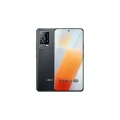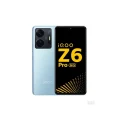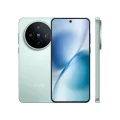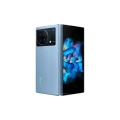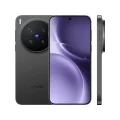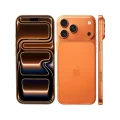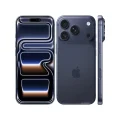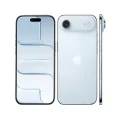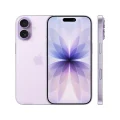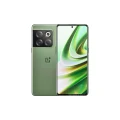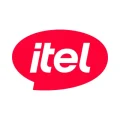- Home
- All Products
- Vivo
- Vivo X300
Vivo X300
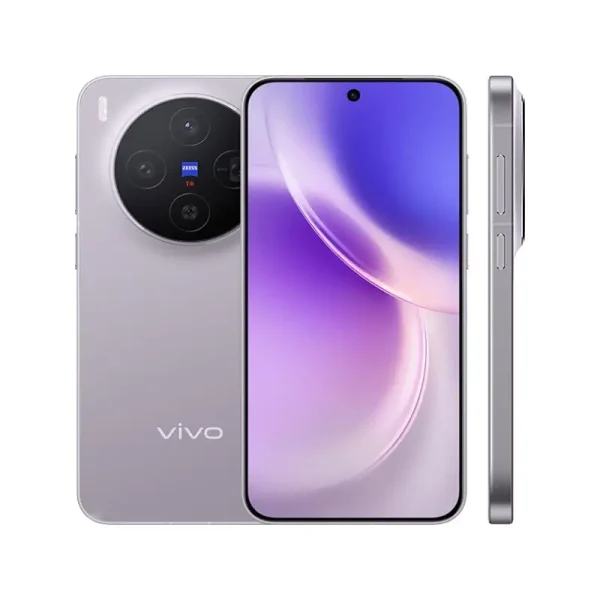



-
Battery: 6040 mAh
-
RAM: 12GB, 16GB
-
Storage: 256GB, 512GB , 1TB
-
Display: LTPO AMOLED,6.31 inches,
-
Camera: Rear 200MP+50MP+50MP, and Front 50MP
-
OS: Android 16, up to 4 major Android upgrades, OriginOS 6
Full Specifications
Price
| Unofficial | 94990 BDT 12GB/256GB, 110000 BDT 12GB/512GB, 120000 BDT 16GB/512GB Approx. |
General
| Model | Vivo X300 |
| Announced | 2025, October 13 |
| Released | 2025, October 17 |
| Status | Available |
Design
| Dimensions | 150.6 x 71.9 x 8 mm (5.93 x 2.83 x 0.31 in) |
| Weight | 190 g (6.70 oz) |
| SIM SIM (Subscriber Identity Module) is a small card that contains mobile network subscriber's account information. This allows the phone using the card to attach to a mobile network. The SIM card is most commonly associated with GSM and UMTS mobile networks. Moving a SIM card from one phone to another allows a subscriber to switch mobile phones without having to contact their mobile network carrier. SIM cards can also be used by a phone to store limited amounts of data, such as phone numbers and text messages. |
Nano-SIM + Nano-SIM + eSIM (max 2 at a time) - International Nano-SIM + Nano-SIM - China |
| Colors | Black, Blue, Red, Purple, Pink |
Display Specification
| Display Type Display Technology => A number of display technologies and types used in mobile phones => TFT (Thin Film Transistor), IPS (In-Place Switching), OLED (Organic Light Emitting Diode), AMOLED (Active-Matrix Organic Light-Emitting Diode), Super AMOLED (an even advanced version of AMOLED), Resistive Touchscreen (Resistive touchscreens contain two layer of conductive material with a very small gap between them which acts as a resistance), Capacitive Touchsceen (Capacitive touchscreen technology consists of a layer of glass coated with a transparent conductor) | LTPO AMOLED, 1B colors, 120Hz, 2160Hz PWM, HDR10+, HDR Vivid, 4500 nits (peak) |
| Size | 6.31 inches, 98.0 cm2 (~90.5% screen-to-body ratio) |
| Resolution | 1216 x 2640 pixels, 19.5:9 ratio |
| Refresh Rate | 120Hz, 2160Hz PWM |
| Pixel Density Pixel Density (PPI) is refers to the concentration of pixels on a particular display, measured in pixels per inch (ppi). Pixel density is calculated by dividing the diagonal pixel resolution of a display by its diagonal size, higher pixel density better display quality. | 460 ppi density |
| Display Protection Display Protection => Gorilla Glass is a special alkali-aluminosilicate glass shield with exceptional damage resistance that helps protect mobile displays from scratches, drops, and bumps of everyday use, It is always better to go for a smartphone with Gorilla Glass for that added protection and peace of mind. | Unspecified, Mohs level 4 Ultra HDR image support |
Platform
| Operating System OS => Every computer system run on a base software called Operating System (OS). Operating System controls all basic operations of the computer (such as smartphone, PDAs, tablet computers and other handheld devices). The Operating System allows the user to install and run third party applications (apps), apps are used to add new functionality to the device. | Android 16, up to 4 major Android upgrades, OriginOS 6 |
| Chipset Chipset is a group of integrated circuits designed to perform one or a more dedicated functions, often with real time computing constraints, Popular smartphones are equipped with more advanced embedded chipsets that can do many different tasks depending on their programming. | Mediatek Dimensity 9500 (3 nm) |
| CPU CPU (Central Processing Unit) mostly known as processors, CPU processes instructions in order to carry out certain functions that make your device operate properly. Processors are often described as the brain of computers, smartphones and tablets, Smartphones and tablets rely on processors to carry out their every task, Processors are an incredibly important factor in selecting any type of computing device, including your smartphone. | Octa-core (1x4.21 GHz C1-Ultra & 3x3.5 GHz C1-Premium & 4x2.7 GHz C1-Pro) |
| GPU GPU (Graphics Processing Unit) is a single-chip processor designed to rapidly manipulate and alter memory to accelerate the creation of images in a frame buffer intended for output to a display, This includes things such as lighting effects, object transformations, and 3D motion. | Arm G1-Ultra |
Main Camera
| Camera Setup | Triple |
| Resolution |
200 MP, f/1.7, 23mm (wide), 1/1.4", 0.56µm, PDAF, OIS 50 MP, f/2.6, 70mm (periscope telephoto), 1/1.95", PDAF, OIS, 3x optical zoom 50 MP, f/2.0, 15mm, 119˚ (ultrawide), 1/2.76", 0.64µm, AF |
| Features | Laser AF, Zeiss optics, Zeiss T* lens coating, LED flash, panorama, HDR, 3D LUT import |
| Video | 4K@30/60/120fps, 1080p@30/60/120/240fps, gyro-EIS, 4K@120fps HDR |
Selfie Camera
| Camera Setup | Single |
| Resolution | 50 MP, f/2.0, (wide), 1/2.76", 0.64µm, AF |
| Video | 4K@30/60fps, 1080p@30/60fps |
| Features | HDR |
Network & Connectivity
| Technology | GSM / HSPA / LTE / 5G |
| Speed | HSPA, LTE, 5G |
| Wi-fi Wi-Fi is a popular wireless networking technology using radio waves to provide high-speed network connections that allows devices to communicate without cords or cables, Wi-Fi is increasingly becoming the preferred mode of internet connectivity all over the world. | Wi-Fi 802.11 a/b/g/n/ac/6/7, dual-band |
| Bluetooth Bluetooth is a wireless communications technology for exchanging data between mobile phones, headsets, computers and other network devices over short distances without wires, Bluetooth technology was primarily designed to support simple wireless networking of personal consumer devices. | 5.4, A2DP, LE, aptX HD, LHDC 5 |
| NFC NFC (Near field communication) is a set of standards for smartphones and similar devices to establish peer-to-peer radio communications with each other by touching them together or bringing them into proximity, usually no more than a few inches. | Yes |
| Positioning | GPS (L1+L5), GLONASS (L1), BDS (B1I+B1c+B2a+B2b), GALILEO (E1+E5a+E5b), QZSS (L1+L5), NavIC (L5) |
| FM Radio | No |
| Infrared port | Yes |
| USB | USB Type-C 3.2, OTG |
| 2G Network | GSM 850 / 900 / 1800 / 1900 |
| 3G Network |
HSDPA 850 / 900 / 1700(AWS) / 1900 / 2100 - International HSDPA 850 / 900 / 2100 - Malaysia, India HSDPA 800 / 850 / 900 / 1700(AWS) / 1900 / 2100 - China |
| 4G Network | 1, 2, 3, 4, 5, 7, 8, 18, 19, 20, 25, 26, 28, 34, 38, 39, 40, 41, 42, 43, 48, 66 |
| 5G Network | 1, 2, 3, 5, 7, 8, 18, 20, 25, 26, 28, 34, 38, 39, 40, 41, 48, 66, 77, 78 SA/NSA/Sub6 |
Battery
| Battery Type Battery Type => Cell phones run on various kinds of batteries depending on the manufacturer, phone size or shape and features. There are basically four types of cell phone batteries => Lithium Polymer, Lithium Ion, Nickel Metal Hydride and Nickel Cadmium. | Li-Ion (Lithium Ion) |
| Capacity Battery Capacity is a measure (typically in Amp-hr) of the charge stored by the battery, and is determined by the mass of active material contained in the battery. The battery capacity represents the maximum amount of energy that can be extracted from the battery under certain conditions. | Si/C Li-Ion 6040 mAh |
| Removable | Yes |
| Charging |
90W wired 40W wireless Reverse wired |
| Wireless Charging Wireless Charging (Inductive Charging) uses an electromagnetic field to transfer energy between two objects. This is usually done with a charging station. Energy is sent through an inductive coupling to an electrical device, which can then use that energy to charge batteries or run the device. | Yes |
Multimedia
| Loudspeaker | Yes, with stereo speakers |
| Audio Jack | No |
Storage
| Card Slot Memory Card Slot is a special slot for inserting a memory card. Memory cards allow you to expand the phone's built-in memory, A memory card (sometimes called a flash memory card or a storage card) is a small storage medium used to store data such as text, pictures, audio, and video, for use on small, portable or remote computing devices such as mobile phones, mp3 players, digital cameras. | No |
| Internal Storage Internal Storage is a data storage space (flash memory) mostly used in smartphones, tablets and other electronic devices where operating system, apps, music, photos, videos, files and other user data Is stored. |
256GB 12GB RAM, 256GB 16GB RAM, 512GB 12GB RAM, 512GB 16GB RAM, 1TB 16GB RAM UFS 4.1 |
Sensors
| Fingerprint | Yes (under display, ultrasonic), |
| Other Sensors | Accelerometer, gyro, proximity, compass |
PROS
- Flagship-level performance with Dimensity 9500
- Stunning 120Hz AMOLED display with HDR support
- Excellent camera system with Zeiss optics
- Long battery life and ultra-fast charging
- Premium IP69-rated build quality
CONS
- No 3.5mm headphone jack
- No expandable storage
- Slightly heavy at 190g
- Price may be high for budget users
About the Vivo X300
The vivo X300 is one of the most advanced flagship smartphones released in October 2025. It combines elegant design, cutting-edge performance, and exceptional camera technology. Built with a glass front and back with an aluminum alloy frame, it looks premium and feels durable with IP68/IP69 dust and water resistance.
The phone features a stunning 6.31-inch LTPO AMOLED display with 120Hz refresh rate, HDR10+, and 4500 nits peak brightness, delivering vibrant visuals and smooth scrolling. Powered by the Mediatek Dimensity 9500 (3nm) chip and up to 16GB RAM, it handles heavy tasks, gaming, and multitasking with ease.
The massive 6040mAh battery supports 90W wired and 40W wireless charging, ensuring long battery life and quick recharging. The triple rear camera setup, co-engineered with Zeiss, includes a 200MP wide lens, a 50MP periscope telephoto (3x optical zoom), and a 50MP ultrawide lens, providing pro-grade photography and 4K@120fps video. The 50MP selfie camera is equally powerful, perfect for vloggers and selfie lovers.
Main Key Features
- Display: 6.31″ LTPO AMOLED, 120Hz, HDR10+, 4500 nits brightness
- Processor: MediaTek Dimensity 9500 (3nm)
- RAM & Storage: Up to 16GB RAM, 1TB UFS 4.1 storage
- Camera: 200MP (main) + 50MP (telephoto) + 50MP (ultrawide)
- Selfie Camera: 50MP with 4K video
- Battery: 6040mAh, 90W wired, 40W wireless charging
- OS: Android 16, OriginOS 6
- Other: Stereo speakers, NFC, Infrared, ultrasonic fingerprint, IP69 certified
Why Choose the vivo X300?
Choose the vivo X300 if you want a future-proof flagship with exceptional camera quality, robust performance, and stylish design. It’s perfect for mobile photographers, gamers, and professionals who need speed, endurance, and premium features in one device.
Opinion
The vivo X300 is a top-tier smartphone that competes directly with the Samsung Galaxy S24 and Xiaomi 15 series. It delivers flagship performance, reliable battery life, and incredible photography. With Android 16 and guaranteed updates, it’s a smart long-term investment for tech enthusiasts.
See Another Model:
FAQs about vivo X300
Q: Does vivo X300 support 5G?
A: Yes, it fully supports 5G connectivity for faster internet speeds.
Q: Is the vivo X300 waterproof?
A: Yes, it has IP68/IP69 certification for dust and water resistance.
Q: How fast is the charging?
A: It supports 90W wired and 40W wireless charging.
Q: What is the price of the Vivo X300?
A: The expected price is around (approximately BDT 94990).
Q: Is the vivo X300 good for gaming?
A: Absolutely! The Dimensity 9500 and 120Hz AMOLED make it a gaming powerhouse.
Give Your Review
Disclaimer Note
You can write your own disclaimer from APS Settings -> General -> Disclaimer Note.
